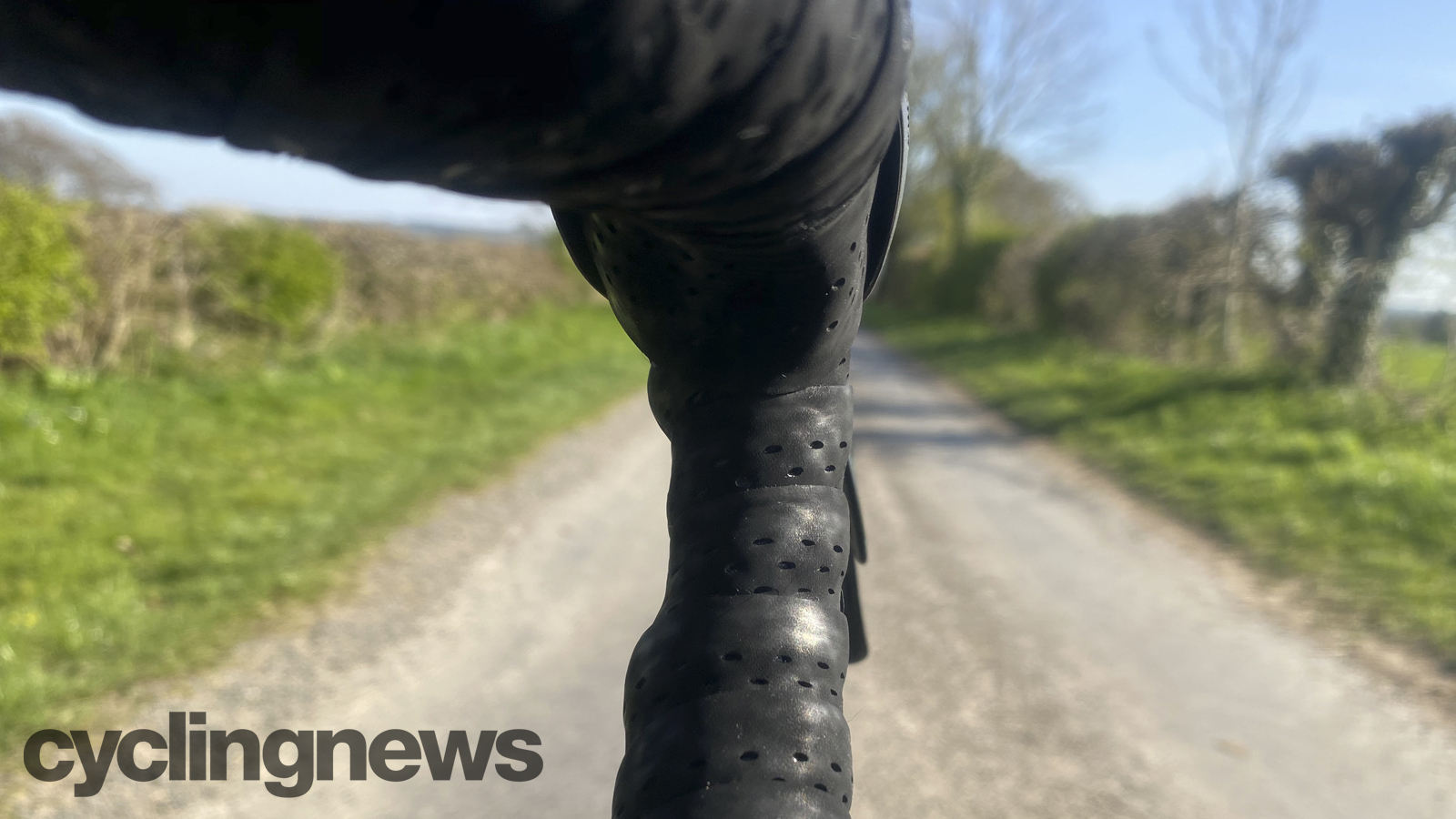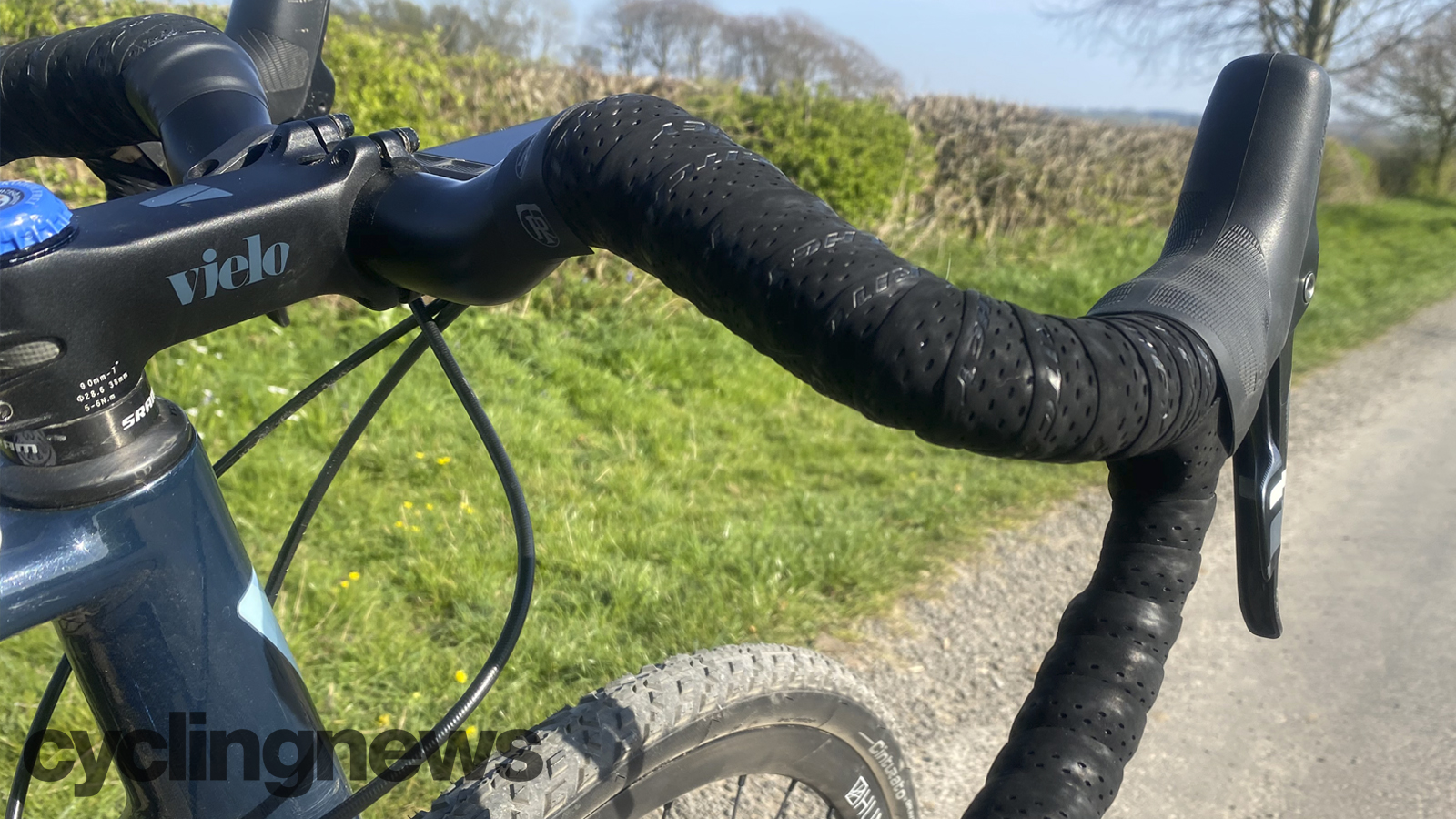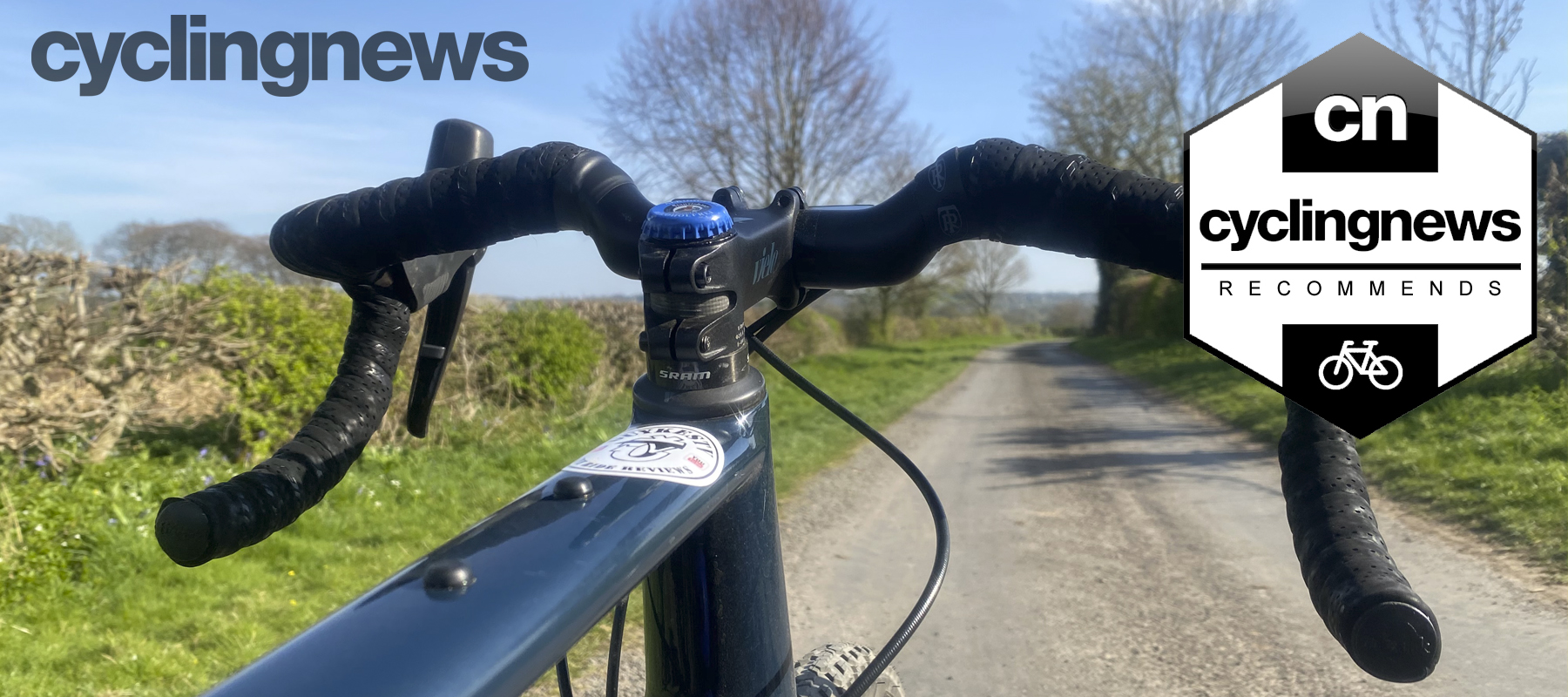Cyclingnews Verdict
Very light with a powerful ‘rouleur’ position and real comfort boosting benefits for extended cruising. The aero gains are questionable though, and the high cost and awkward accessorising are definite issues
Pros
- +
Fat humps feel great in your hands
- +
More comfortable wrist angle
- +
Very light
- +
Great bar feel
Cons
- -
Very expensive
- -
Aero gains are debatable
- -
Taping and accessorising are awkward
You can trust Cyclingnews
There have been odd-shaped handlebars for as long as there have been bikes, and even big brands like Specialized and Canyon are running some crazy looking cockpits on some bikes. The kinky inner section and backward sweep of the Wave AR bar still make it a stop and stare component, but after a few months adjusting, there are definitely some real wins to going wonky.
Best road handlebars: how to choose the best handlebars for your bike
Best bar tape: comfortable handlebar tape to protect your palms
Best road bike saddles
Construction
The AR bar is a premium carbon layup and weighs in just over 200g in a 440mm width (the widest currently available alongside 420, 400 and 380mm). The AR (All-Rounder) is cleared for use on gravel bikes and touring bikes and we absolutely hammered it over seriously rocky terrain without any ill effects. 120mm drop, 77mm reach and 4-degree flare are the same across all sizes, as are the pronounced 12-degree backsweep and 15-degree downslope from the high rise sections just outboard of the clamp zone. All sizes also get an indented thumb notch below the brake clamp zone.
To reflect likely hand sizes, the girth of the hump varies from 36.7mm to 30mm which suited our big paws fine but petite handed riders who want more width might not be so happy. Otherwise, it comes with guide tubes already threaded through for internal gear and brake lines. There’s a grip panel in the centre for the stem clamp and it’s marked for rotation as well.
Performance
There’s a five-minute installation video on the coefficient.cc site to help you take full advantage of the Wave’s aero-ergonomic benefits, but make sure you leave a long time for taping. That’s because the fat hump section presents a real problem with where and how to get the tape started (or finished, depending on which way you go) neatly. The extra girth and curves mean most tape lengths are going to have to be rationed to get a full wrap and it took three attempts - and the darkest depths of the Anglo-Saxon lexicon - to get a covering we were happy with.
In terms of hood reach and drop it feels like a standard compact bar, with just enough flare to add a bit of control in the drops. The thumb notches also potentially add a bit of security if you’ve got really small hands.

It’s the centre of the bar that’s obviously the big deal here though. By sweeping the bar back and tilting it downwards the Wave puts your hands in a much more natural ‘rested’ position. It also tucks your elbows in for a narrower position that’s really good to pull hard from ‘Praying Mantis’ style or just tap out tempo from on an extended climb. The voluptuous humps also feel really nice in your hands and the whole bar feel is forgiving without being floppy, noticeably reducing fatigue and increasing relaxation on longer rougher rides without sacrificing control.
Despite being pushed forward at the humps, the backswept bar and elbows-in stance makes for a more cramped feel so you naturally sit up taller. Again this is good for comfort but we’re not so sure about the aero advantages. While it’s more aero/comfortable than a normal centre grip position, cross-referencing speed and wattage readouts showed that going more stretched and wider on the hoods still worked out measurably faster than narrower and taller on the humps. That’s unless you really bend your arms to get low again at which point your triceps are really going to start screaming until you adapt.
The shape also makes fitting bar bags more awkward if that’s your thing and the clamp area is narrower on smaller bars too so lights are definitely going to have to hang underneath where cable conflict can be an issue. It’s definitely not tri-bar compatible either but there’s a new, more blade than bulge topped ‘Wave RR’ race bar coming soon that has a built-in bridge ahead of the clamp section for your dashboard equipment.

Verdict
After decades of being conditioned to conventional bar shapes, the Wave feels odd to use at first. A lot of riders will choke on the cost and/or cosmetic aspects too. For riders who don’t mind gaining some height (or building better triceps), there are definite comfort and fatigue advantages to the more natural wrist angle. They’re also very light, with a great ride feel, and the bulges feel lovely and comforting under your palms when you’re cruising. The shape definitely makes taping and fitting bags and accessories more awkward too and it’d be good to have wider options for more rowdy gravel riding.
Not the only Wave in the ocean
While it’s not strictly part of the review, we feel it’s worth pointing out that there is some ongoing controversy as to who originated this bar shape. It’s certainly very very similar to a design from Eyropro who say they’ve been prototyping since 1992 and selling in Australia since 2017. With legal action potentially pending, we’re not in a position to go into the details here but it’s fair to point out that there is another option that would seem to offer the same pros and cons at a similar price and weight.
Tech spec: Coefficient Wave AR handlebar
- Price: £260 / $329
- Weight: 204g (44cm)
- Widths: 38cm, 40cm, 42cm, 44cm
- Drop: 120mm
- Reach: 77mm
- Flare: 4 degrees
